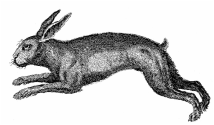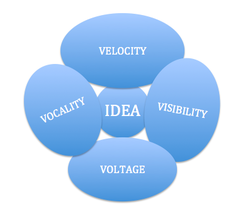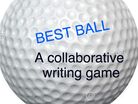NEXT SENTENCE
We use the word sentence to refer to a rather mechanical thing. Grammar books tell us that a sentence is a linear arrangement of two or more words in an order such that an identifiable subject and an identifiable predicate combine to yield a meaningful expression.
Well, that's very nice, but for a piece of nature that rivals the DNA molecule for elemental importance and beats it for complexity, this definition falls short. If the sentence could speak for itself, it might tell you:
So our business here is to explore the great power of the sentence, respectfully, humbly, and analytically. Maybe writing does not feel so good to you. Is that a bad thing? Are writers just born writers, you may wonder? Can sentence components be usefully examined as a way to develop a personal styles? What roads might lead to being a better writer? I hope what you find here will help you to unleash your best sentences. To begin, take a look at the blue bubbles lumped together in the picture here. They represent four aspects of any sentence that make it what it is. At the center is what is called the ideational content of the sentence. What is the idea that the sentence expresses? To the degree that this is able to be separated from the four surrounding bubbles (and that is a vexed question) the "idea" is usually regarded as the heart of the sentence. But you should know that distinguishing the ideational content of a sentence from its accompanying rhetorical elements is a fool's errand. They are all stitched together too tightly. All five bubbles need to be taken together as a unitary item -- the quincunx. (A quincunx, if you are wondering, is a arrangement of five things so that one is in the center and the other four surround it -- like the five-dot pattern on dice.) In the sentence quincunx, the idea is central.
|
--26 Tips & 9 Questions
|




